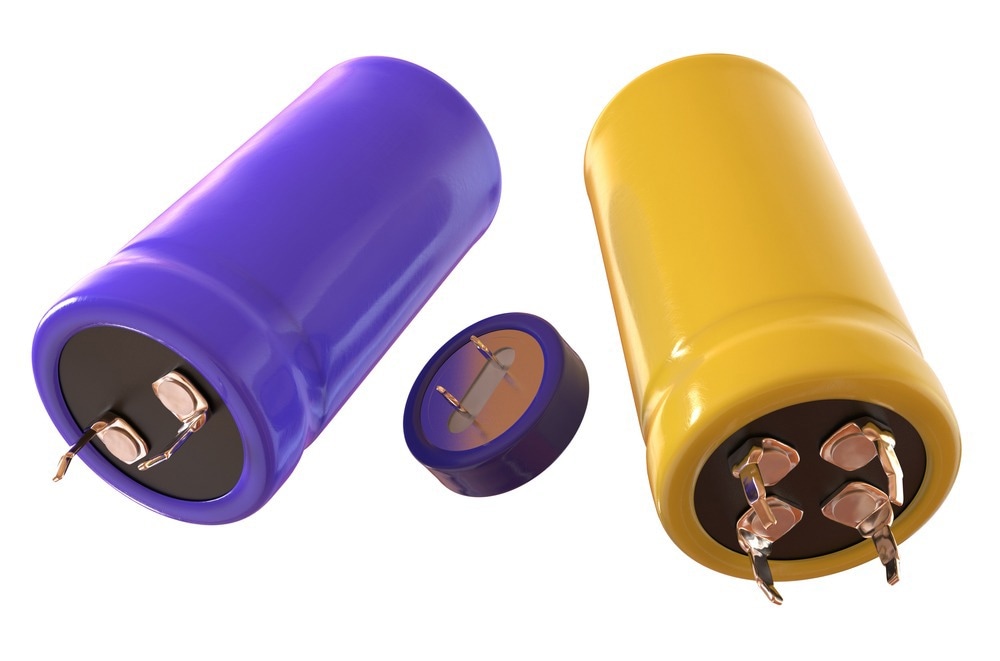Nickel-cobalt (Ni-Co) layered double hydroxide (LDH) has been investigated as a promising supercapacitor electrode material. A recent study published in the International Journal of Energy Research focuses on the innovative usage of graphene oxide (GO) and single-walled carbon nanohorns (SWCNHs) hybrid as an efficient platform for LDH coating materials.

Study: Ni-Co layered double hydroxide coated on microsphere nanocomposite of graphene oxide and single-walled carbon nanohorns as supercapacitor electrode material. Image Credit: Peter Sobolev/Shutterstock.com
The novel Ni-Co LDH and GO/SWCNHs composite-based supercapacitor electrode material is a potential choice for pseudocapacitor applications because of its superior electrochemical properties and ease of production, which is ideal for various commercial and industrial applications.
Why are Supercapacitors so Important?
Clean and renewable energy technologies are presently being explored to address global energy consumption and sustainability challenges. As a result, competition for more efficient energy storage systems, such as supercapacitors and regenerative batteries, has surged dramatically.
Supercapacitors have sparked much interest in scientific communities because of their high energy density, quick charging/ discharging rates, and extended cyclic stability. Supercapacitors are classed as electric double-layer capacitors (EDLCs) or pseudocapacitors, depending upon their energy storage mechanism.
Energy storage in an EDLC is related to a non-Faradaic mechanism involving physical absorption and dissociation of electroactive species at the surfaces of the supercapacitor electrode material and electrolytes. On the other hand, energy storage in pseudocapacitors is principally reliant on reversible Faradaic interactions between the supercapacitor electrode material's interface functional groups.
Supercapacitor Electrode Material: Overview and Challenges
Graphene oxide (GO) possesses appealing properties for supercapacitor electrode material applications, such as numerous reactive groups and multimodal ion transport pathways. However, the graphene oxide-based supercapacitor electrode material also has significant drawbacks, such as the unloading of graphene layers during the reduction reaction, insulating properties, and poor bulk density.
SWCNHs have also been investigated as a supercapacitor electrode material due to their large specific surface area (SSA), tunable porous structure, and excellent electrical conductance. SWCNHs with conical tubular structures form robust spherical aggregates and have enclosed graphitic single-wall structures comparable to single-walled carbon nanotubes (SWCNTs).
However, contrary to SWCNTs with exceptional crystallization, SWCNHs contain various structural flaws such as pentagons and heptagons, allowing nanoscale holes to develop on the interface of SWCNHs in oxidizing environments, restricting their usability as appropriate supercapacitor electrodes.
Ni-Co Layered Double Hydroxide as a Supercapacitor Electrode Material
Electrode substances such as metallic oxides, metallic hydroxides, and conductive polymers are regarded as extremely ideal contenders for pseudocapacitive energy storage technologies due to the bidirectional Faradaic processes at the electrode-electrolyte contacts.
Nickel-cobalt (Ni-Co) layered double hydroxide (LDH) with adjustable topologies is an attractive supercapacitor electrode material because of its cheap cost, nontoxicity, abundance in nature, and outstanding electrochemical stability.
Hydrothermal and electrolytic deposition techniques generally create Ni-Co nanostructures. The structural morphologies significantly impact the electrolytic capabilities of Ni-Co layered double hydroxide electrodes. Therefore, composites of Ni-Co nanostructures and carbon porous substances such as graphene oxide (GO) and SWCNHs must be investigated to increase the efficiency of Ni-Co LDH-based supercapacitor electrode material.
Highlights of the Current Research
In this study, the researchers developed a two-step technique for producing composite materials composed of Ni-Co LDH, graphene oxide (GO), and oxidized single-walled carbon nanohorns (SWCNHs). The initial stage was to spray-dry a combination of GO and SWCNHs to create spherical hybrid particles ideal for mass manufacturing due to the simple and cost-effective procedure.
In the second stage, extremely thin nickel-cobalt (Ni-Co) LDH nanosheets were hydrothermally coated on graphene oxide microspheres and single-walled carbon nanohorns to manufacture the novel supercapacitor electrode material.
The pseudocapacitive activity of hybrid supercapacitor electrode material was evaluated in specific capacity and cycling efficiency. During the study, the impacts of the activated carbon substrate composition on the morphology and electrolytic efficacy of Ni-Co LDH were also investigated.
Important Findings of the Study
The graphene oxide and SWCNHs-based composite had a comparatively high SSA and electric conductance, resulting in a significant effective area for interactions between the supercapacitor electrode material and electrolytic ions during the electrolysis reaction.
The new Ni-Co LDH and GO/SWCNHs composite-based supercapacitor electrode material demonstrated considerably high gravimetric specific capacity and outstanding specific capacitance stability in an aqueous electrolyte environment. These outstanding findings might be attributed to the high electrical conductance and pseudo-capacitance of the nanohybrid GO/SWCHNs and coated Ni-Co LDH.
Based on these results, it is reasonable to declare that the novel supercapacitor electrode material developed in this work has significant potential for future energy storage applications.
Reference
Kim, J. H. et al. (2022). Ni-Co layered double hydroxide coated on microsphere nanocomposite of graphene oxide and single-walled carbon nanohorns as supercapacitor electrode material. International Journal of Energy Research. Available at: https://onlinelibrary.wiley.com/doi/10.1002/er.8657
Disclaimer: The views expressed here are those of the author expressed in their private capacity and do not necessarily represent the views of AZoM.com Limited T/A AZoNetwork the owner and operator of this website. This disclaimer forms part of the Terms and conditions of use of this website.